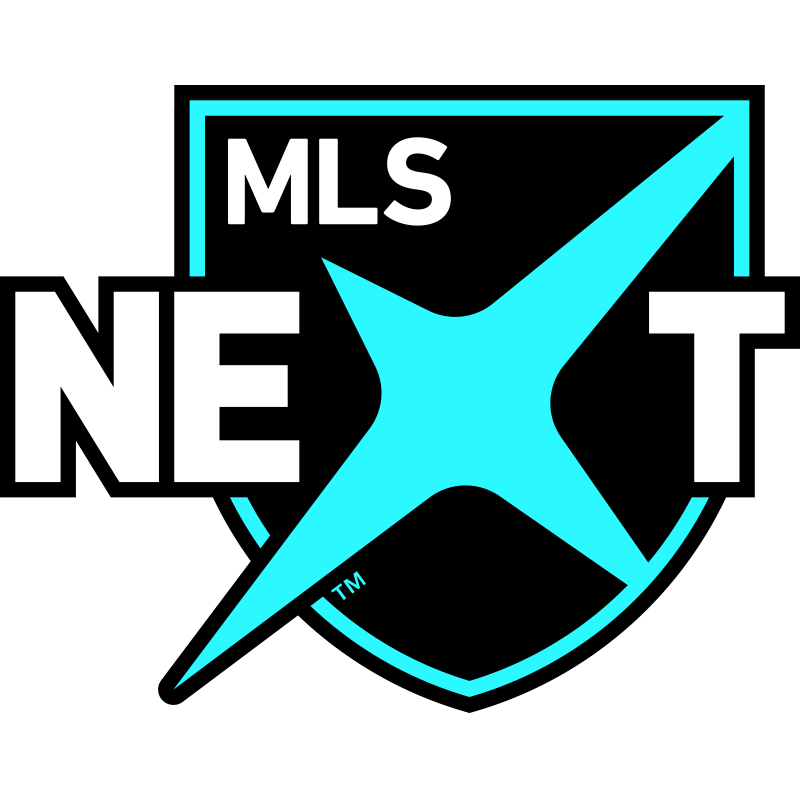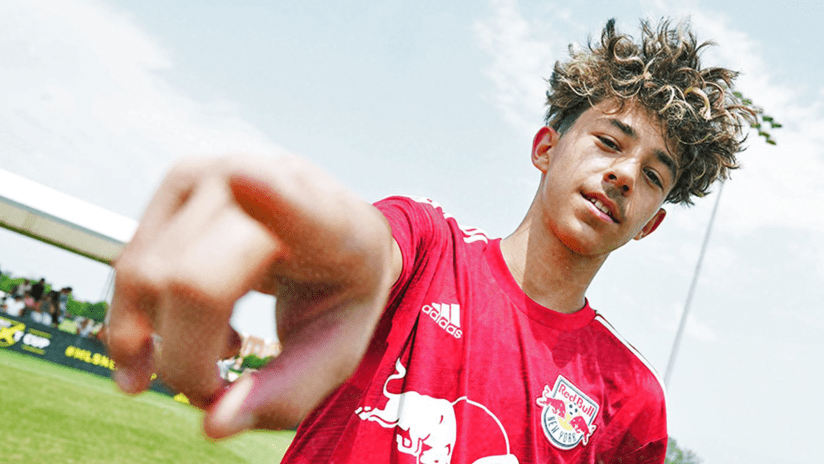The fact that the New York Red Bulls’ Under-15 academy team won the MLS NEXT Cup championship last month was not a huge surprise or upset. They were one of their age group’s top performers during the regular season and showed quality and resourcefulness amid sweltering Texas heat during the playoffs at the Toyota Soccer Center, winning five matches in eight days by a combined aggregate of 13 goals scored and just two conceded.
Rather more striking is that several of those U-15s had already logged minutes at a professional level at that point, playing up with Red Bulls II at times in MLS NEXT Pro. Goalkeeper Aidan Stokes, in fact, signed a homegrown contract earlier this year that will see him graduate from MLS NEXT Pro to MLS status in 2024.
The program that helped mold current US internationals Tyler Adams, Matt Miazga and John Tolkin – along with a large chunk of the current RBNY first-team roster – has more top prospects moving through the pipeline. Plenty more.
“We're not going to get it all right. But what I do know is, we've told our sporting director and head of sport [that] our biggest problem is going to be, we can't sign everybody,” Red Bulls academy director Sean McCafferty told MLSsoccer.com. “Our job is to give them big headaches, because we have so much talent coming through.
“That's our market, that's our homestay program, the scouting, getting that right. So we should be doing this. This should be a given.”
Same pressing, more possession
The infamous Red Bull high press remains central to their teams at all levels: “our differentiator,” as McCafferty calls it. Even in 100-degree temperatures, their U-15s’ commitment to tigerish harrying of opponents did not waver in Texas, though they, like the RBNY first team under new head coach Troy Lesesne, are exploring more intricate game models when in possession.
“One strength of ours is we have such a diverse player pool,” said McCafferty’s colleague Chris Harmon. “Something that we've really keyed in on the last couple of years is making sure that we bring in different types of players. Of course, they have to have the Red Bull traits. But it doesn't mean that we shy away from bringing in players who are very technical as well, who can understand the tempo of the game and give us different varieties.”
That’s also a necessary part of recruitment and development in the largest metropolitan area in the United States, even as pressing tactics steadily move further into the mainstream.
“We have to develop the players more holistically. They have to be adaptable players, because the game can't always be 100 miles an hour,” noted McCafferty. “We don't negotiate on the against-the-ball stuff. So we do our resting with the ball, picking our moments to breathe, move the opponent. That's something we're big on. Obviously, like every philosophy, it has to evolve. And I think we're seeing it now with our first team with Troy, just valuing the ball more, being a bit more intentional in how we play.”
International opportunity
The Red Bulls’ U-13s also lifted hardware in June, winning the vaunted Bassevelde Cup in Belgium – the so-called “Champions League of U-13 competitions” – by defeating youth sides from clubs like Benfica, PSV Eindhoven, Juventus, West Ham and Club Brugges. Other RBNY academy sides travel to Leipzig, Salzburg, Dubai and England for international experiences, and players who impress are often invited to stick around for additional training stints.
It’s part of the advantage the club enjoy via their membership in Red Bull’s global network of clubs in Germany, Austria, Brazil and points further afield. It also opens doors when their North American prospects are ready to make the leap across the Atlantic, like Adams and Caden Clark have.
“For the staff, for our development, the ability to share best practices, have support, is second to none. It's unbelievable,” said McCafferty. “But then for a player, the end goal for the majority of players is Europe, right? That's where the big clubs are, the big money is. So we understand that. MLS has grown exponentially, from the level of play, from the financial gain, so I think they’re staying here a bit longer. But ultimately, we have that pathway. It's clear; it's a clear-cut pathway and we don't just talk about it, there’s examples of it, with Tyler, Caden and other players that have gone across.”
Expanding the player pool
So who’s next? At this point, Stokes’ teammates Julian Hall, Tanner Rosborough, Adri Mehmeti and Gil De Souza look like a few of the leading candidates to follow in his footsteps towards a pro contract.
Of that list, Rosborough, a native of the Pittsburgh area and one of the stars of the MLS NEXT playoffs, is noteworthy as one of the most promising products from RBNY’s broadening scope outside the market.
While the Tri-State area is rich with talent, its sprawl and density can make transportation logistics daunting when it comes to ferrying kids to and from the club’s main base in northern New Jersey. Arranging host families closer to training is another means to broaden the pipeline – and the new Red Bulls training ground, currently under construction in Morris Township, includes plans for eventual dormitory facilities as well.
“There's a lot of complications sometimes, getting a player from New York City to where we are,” said Harmon. “With how big the country is, how do we minimize those hours in the car? Sometimes these homestays can alleviate those and give us more contact time.
“It certainly has to be right for the player at the right time – timing’s everything – and being able to put them in the environment that we know is going to help foster them to take the next step … I'm a big believer [that] the environments, that's what molds players and top talents.”
More fluid pipelines
A veteran of the US youth scene who also worked with Jim Curtin early in the Philadelphia Union head coach’s career, McCafferty is bullish on the future – “the American player has never been more credible globally” – and he sees US and Canadian sides routinely eclipse their overseas counterparts up until age 16 or so.
There, he and his colleagues observe a distinct shift, particularly when competing against teams from European Union nations.
“The EU opens up,” he explained. “So the European clubs obviously have a big competitive advantage over us here in America, because they can bring in players from all the EU countries and they sign them as professionals. So they become professionals.
“They play men's football right away, and we're still playing boys football [with] 17s, 18s … When we went over to Leipzig, it just looked like men's football, whereas we were still playing boys – and it's only one year; it was crazy. Because the 16s, we were much better than Leipzig, much better.”
The hope is that the fuller integration of MLS academy pathways with MLS NEXT Pro second teams is helping close this divide.
“It's just treated at a different level. Like, the 17s [in Europe], you felt like you were watching a professional game,” said Harmon. “I think that's ultimately where our second team now has kind of bridged that gap, where you go from [age] 16, 17, now you're ready to make the jump and playing in real environments, you’re playing in stadiums, you're playing against men.”
The methodical mending of these flaws and soft spots in the North American landscape takes time. Yet the progress made leaves the Red Bulls’ academy leadership, yes, bullish on the future.
“The talent pool has always been here. I would say maybe the coaching and the support is what's been lacking. And now there’s top professional academies, everybody's investing in it, because they see the return on investment,” said McCafferty. “Now you see first teams trusting young players all the time.
“There's only going to be more; there's only one direction it’s trending in the US. I think we're starting to see the young US national team. But we're just going to get better and better and better, and it'll be more players going abroad, hopefully at the right time after getting two to three years of really valuable experience here, because we believe that sets them up for success.”













